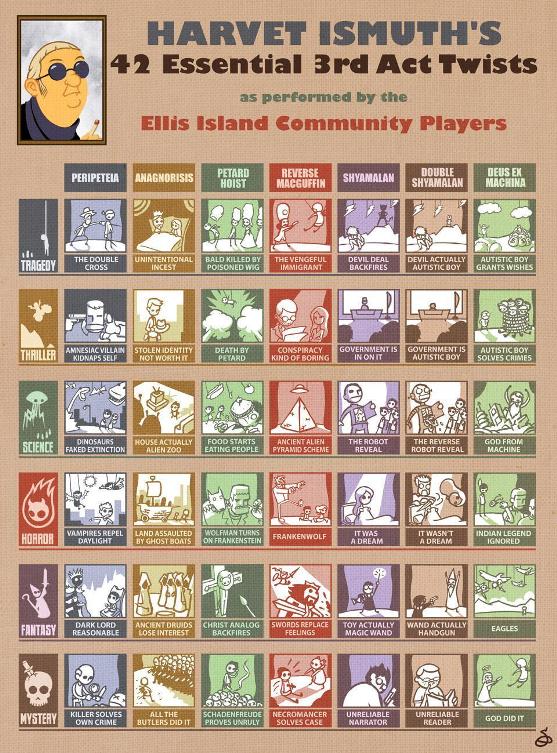You're almost done with your six-month narrative project, and you realize you have no multimedia elements. Or worse, you're coming upon the end of your story, and there's... no end. If you're interested in unconventional approaches, you might consider "Harvet Ismuth's 42 Essential 3rd Act Twists," from the innovative story shop of Dresden Codak.

*graphic courtesy of Dresden Codak/Aaron Diaz
The use of some of the above plot devices may, however, be frowned upon by even the most literary of narrative editors. So if you still have a little time, storyboarding might be a better option.
By creating a visual map of scenes in or pieces of a project, storyboards pinpoint holes in reporting and allow rearrangement of material to find the most compelling structure. Visual representation also makes a story easier to dissect and discuss with an editor.
The Knight Digital Media Center offers this basic how-to for multimedia storyboarding, written by Jane Stevens. A lot of good information shows up in a short space, especially some simple suggestions about what elements work best in which media. Midway through is a section that may not please everyone:
"What part of the story belongs in text? Text can be used to describe the history of a story (sometimes in combination with photos); to describe a process (sometimes in combination with graphics), or to provide first-person accounts of an event. Often, text is what's left over when you can't convey the information with photos, video, audio or graphics."
Your project may give print or text greater primacy than "what's left over." Still, many writers we interview talk about storyboarding their long print pieces.
So consider mapping your project, too. Or you may find yourself unsure of where you're going, lacking an ending, and in need of help from Harvet Ismuth. Which could give you the whole problem of telling true stories...


